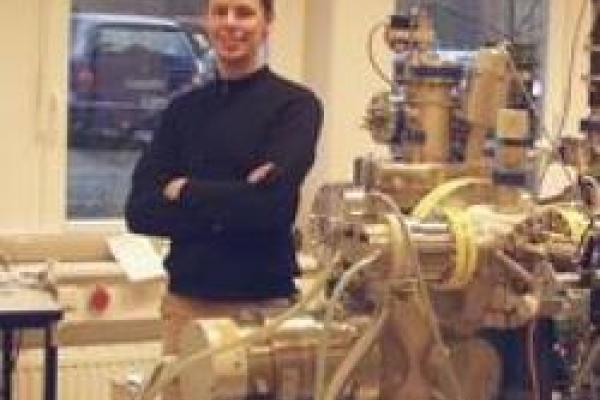
Free-electron lasers can deliver extremely intense, coherent x-ray flashes with femtosecond pulse length, opening the door for imaging single nanoscale objects in a single shot. All matter irradiated by these intense x-ray pulses, however, will be transformed into a highly-excited non-equilibrium plasma within femtoseconds. During the x-ray pulse complex electron dynamics and the onset of atomic disorder will be induced, leading to a time-varying sample.
We have performed first experiments about x-ray laser pulse - nanocluster interaction with a combined spectroscopy and imaging approach at both, the FLASH free electron laser in Hamburg (Germany) and the LCLS x-ray free-electron laser in Stanford (California). Atomic clusters are ideal for investigating the light – matter interaction because their size can be tuned from the molecular to the bulk regime, thus allowing to distinguish between intra and inter atomic processes.
Imaging experiments with xenon clusters show power-density dependent changes in the scattering patterns. Modeling the scattering data indicates that the optical constants of the clusters change during the femtosecond pulse due to the transient creation of high charge states. The results show that ultra fast scattering is a promising approach to study transient states of matter on a femtosecond time scale.
Coincident recording of time-of-flight spectra and scattering patterns allows the deconvolution of focal volume and particle size distribution effects. Single-shot single-particle experiments with keV x-rays reveal that for the highest power densities an highly excited and hot cluster plasma is formed for which recombination is suppressed. Studying the ionization dynamics of smaller clusters shows that the energy absorption depends on the particle size which is attributed to changing Auger rates in the x-ray induced nanoplasma.
Time resolved infrared pump – x-ray probe experiments have started. Here, the clusters are pumped into a nanoplasma state and their time evolution is probed with femtosecond x-ray scattering. The data show strong variations in the scattering patterns stemming from electronic reconfigurations in the cluster plasma.
The results will be compared to theoretical predictions and discussed in light of current developments at free-electron laser sources.
